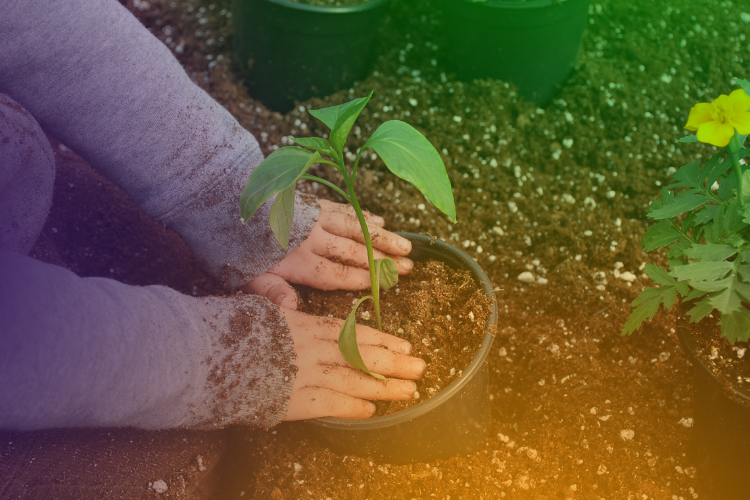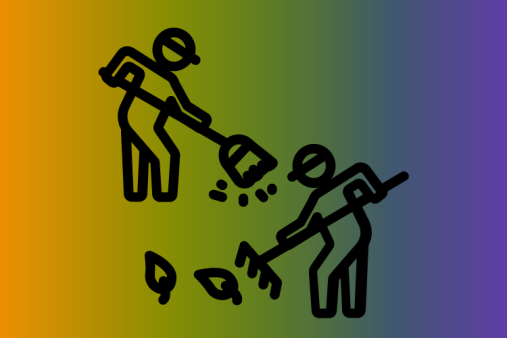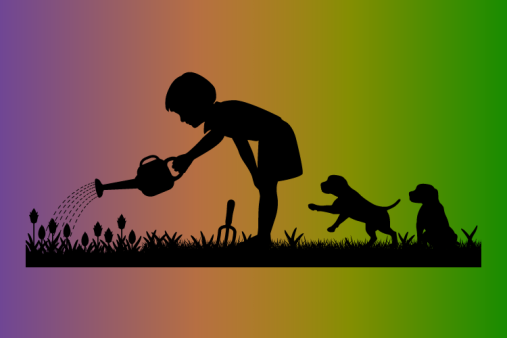Gardening is a beloved pastime for many in the UK, offering a chance to connect with nature, create beautiful outdoor spaces, and even grow your own food. However, the world of gardening comes with its own unique terminology that can sometimes be confusing, especially for beginners. To help you navigate this verdant landscape, we've compiled a comprehensive A-Z gardening glossary.
Whether you're a seasoned green thumb or just starting out, this glossary will equip you with the knowledge needed to understand the language of gardening. From aeration to xerophytes, discover the essential terms and concepts that will help you cultivate a thriving garden. Dive in and let this guide be your companion on your gardening journey.
A
- Aeration: The process of perforating the soil to allow air, water, and nutrients to penetrate the grass roots. Aeration refers to the process of improving air circulation within the soil to promote healthier root growth and overall plant health. This is typically done by creating small holes or loosening compacted soil, allowing air, water, and nutrients to penetrate more easily to plant roots. Aeration helps prevent waterlogging, reduces soil compaction, and supports the activity of beneficial microorganisms, all of which contribute to a more vibrant and productive garden.
- Annual: An annual is a type of plant that completes its entire life cycle—from germination to flowering, seed production, and death—within a single growing season. Unlike perennials, which return year after year, annuals need to be replanted each season. They are often chosen for their vibrant blooms and fast growth, making them ideal for adding quick, seasonal colour and interest to gardens, borders, and containers.
- Arbor: An arbor is a decorative structure, typically made of wood or metal, that serves both functional and aesthetic purposes in outdoor spaces. It usually consists of two or more vertical posts supporting an open, often arched, roof or lattice, creating a shaded passageway, sitting area, or garden entrance. Arbors are often used to support climbing plants like roses or clematis, adding vertical interest and a romantic, natural focal point to the landscape.
- Aquatic Plant: A plant that grows in water or very moist soil.
- Asexual Propagation: Reproducing plants without seeds, using methods like cuttings or division.
- Azalea: A flowering shrub that is part of the Rhododendron genus, popular in gardens for its vibrant blooms.
B
- Bedding Plants: Plants grown in garden beds for seasonal display.
- Biennial: A plant that takes two years to complete its life cycle.
- Blight: A plant disease caused by fungi or bacteria that results in rapid plant death.
- Bonsai: The art of growing miniature trees in containers.
- Border: A strip of land along the edge of a garden bed used for planting flowers or shrubs.
- Bulb: An underground storage organ that contains the complete life cycle of a plant, like tulips or daffodils.
C
- Canopy: The upper layer of trees or shrubs in a garden that provides shade.
- Compost: Decayed organic material used as a plant fertilizer.
- Container Gardening: Growing plants in pots or containers instead of directly in the ground.
- Crop Rotation: The practice of growing different types of crops in the same area in sequential seasons.
- Cultivar: A plant variety that has been produced in cultivation by selective breeding.
D
- Deadheading: The practice of removing spent flowers to encourage further blooming.
- Deciduous: Plants that shed their leaves annually.
- Deep Root Watering: A method of watering plants at the root level to encourage deep root growth.
- Division: A propagation method involving splitting a plant into two or more parts, each with its roots and shoots.
- Dormant: A period when a plant is not actively growing, typically in winter.
E
- Espalier: Training a plant to grow flat against a wall or trellis.
- Evergreen: Plants that retain their leaves throughout the year.
- Exotic Plant: A plant species that is not native to the local area.
F
- Fertilizer: A substance added to soil to supply nutrients to plants.
- Foliage: The leaves of a plant.
- Forcing: Inducing plants to bloom out of their natural season.
- Fungicide: A chemical that kills or inhibits the growth of fungi.
G
- Germination: The process by which a seed develops into a new plant.
- Grafting: Joining two plants together so they grow as one.
- Ground Cover: Low-growing plants that spread to cover the soil.
- Greenhouse: A structure with a glass or plastic roof and walls used to grow plants under controlled conditions.
- Grub: The larval stage of certain insects that live in the soil and feed on plant roots.
H
- Hardening Off: Gradually acclimating plants to outdoor conditions before planting them outside.
- Hardscape: Non-plant elements of a garden, such as paths, walls, and furniture.
- Herbaceous: Plants with non-woody stems that die back at the end of the growing season.
- Heirloom Plant: A plant variety that has been passed down through generations without genetic modification.
- Humus: Decomposed organic matter in soil that provides nutrients and improves soil structure.
I
- Invasive Species: Non-native plants that spread rapidly and disrupt local ecosystems.
- Irrigation: The artificial application of water to soil to assist in growing crops.
- Integrated Pest Management (IPM): A strategy that combines biological, cultural, mechanical, and chemical methods to control pests.
J
- Japanese Beetle: A pest that feeds on the leaves, flowers, and fruits of many plants.
- Jute: A natural fiber used in gardening for tying plants or as a component in biodegradable pots.
K
- Knot Garden: A formal garden design featuring intricate patterns of clipped hedges.
- Kale: A leafy green vegetable that is part of the cabbage family.
L
- Lawn: A stretch of grass-covered land, typically surrounding a house or building.
- Layering: A method of plant propagation where a branch is bent to the ground and covered with soil to encourage root formation.
- Loam: A type of soil that is ideal for gardening, consisting of a balanced mixture of sand, silt, and clay.
- Legume: A plant that can fix nitrogen from the air into the soil through its roots.
M
- Manure: Animal dung used to fertilize land.
- Mulch: A material spread over the surface of the soil to retain moisture, suppress weeds, and regulate temperature.
- Microclimate: The climate of a small, specific place within a larger area, influenced by factors like buildings or trees.
- Mycorrhizae: Symbiotic relationships between fungi and plant roots that enhance nutrient uptake.
N
- Native Plant: A plant that occurs naturally in a particular region or ecosystem.
- Nitrate: A form of nitrogen found in soil that is an essential nutrient for plant growth.
- Node: The part of a plant stem from which leaves or branches grow.
O
- Organic Gardening: Gardening without synthetic fertilizers or pesticides, relying on natural methods.
- Ornamental Grass: Grasses grown for their aesthetic appeal rather than for food or feed.
- Overwintering: Protecting plants during the winter to ensure they survive until spring.
P
- Peat: Partially decayed plant material often used in potting mixes.
- Perennial: A plant that lives for more than two years.
- pH Level: A measure of how acidic or alkaline soil is.
- Pollination: The transfer of pollen from the male part of a flower to the female part, resulting in the production of seeds.
- Pruning: Cutting back parts of a plant to improve growth or maintain shape.
- Pesticide: A substance used to kill pests.
- Propagation: The process of growing new plants from seeds, cuttings, or other plant parts.
Q
- Quarantine: Isolating plants to prevent the spread of pests or diseases.
R
- Raised Bed: An elevated garden bed that provides better soil conditions and drainage.
- Rhizome: An underground stem that produces new shoots and roots.
- Root Ball: The mass of roots at the base of a plant.
- Root Bound: A condition where a plant's roots have grown too large for their container and become tightly packed.
- Rootstock: The root part of a grafted plant onto which a scion is grafted.
S
- Scarification: Scratching or altering the seed coat to improve germination.
- Seedling: A young plant grown from seed.
- Self-Sowing: Plants that naturally drop seeds which germinate and grow without human intervention.
- Shrub: A woody plant smaller than a tree, usually with multiple stems.
- Soil Amendment: Materials added to soil to improve its physical or chemical properties.
- Sow: To plant seeds.
- Succulent: A plant with thick, fleshy leaves or stems adapted to storing water.
- Symbiosis: A mutually beneficial relationship between different organisms.
T
- Thinning: Removing excess seedlings to allow the remaining plants more space to grow.
- Topiary: The art of trimming and shaping plants into decorative forms.
- Transplanting: Moving a plant from one location to another.
- Trellis: A framework of lattice used to support climbing plants.
- Tuber: A swollen underground stem or root, like a potato, used for food storage and propagation.
U
- Understory: The layer of vegetation beneath the canopy of trees.
- Urea: A nitrogen-rich fertilizer.
V
- Variegation: The appearance of differently coloured zones on leaves or stems.
- Vermicomposting: The process of using worms to decompose organic waste into nutrient-rich compost.
- Vermiculite: A mineral used in potting mixes to improve soil aeration and moisture retention.
- Vertical Gardening: Growing plants upward on a structure rather than on the ground.
W
- Watering Can: A container with a spout used to water plants.
- Weed: An unwanted plant that competes with cultivated plants for nutrients and space.
- Wilt: The drooping of plant leaves and stems due to insufficient water or disease.
- Windbreak: A barrier, often made of trees or shrubs, used to reduce wind speed and protect plants.
X
- Xerophyte: A plant adapted to grow in dry conditions.
Y
- Yield: The amount of produce harvested from a plant or garden area.
- Yarrow: A hardy perennial plant often used in gardens for its attractive flowers and medicinal properties.
Z
- Zen Garden: A Japanese-style garden designed for meditation, often featuring rocks, gravel, and minimal plantings.
- Zinnia: A colourful annual flower popular in UK gardens for its bright and varied blooms.







